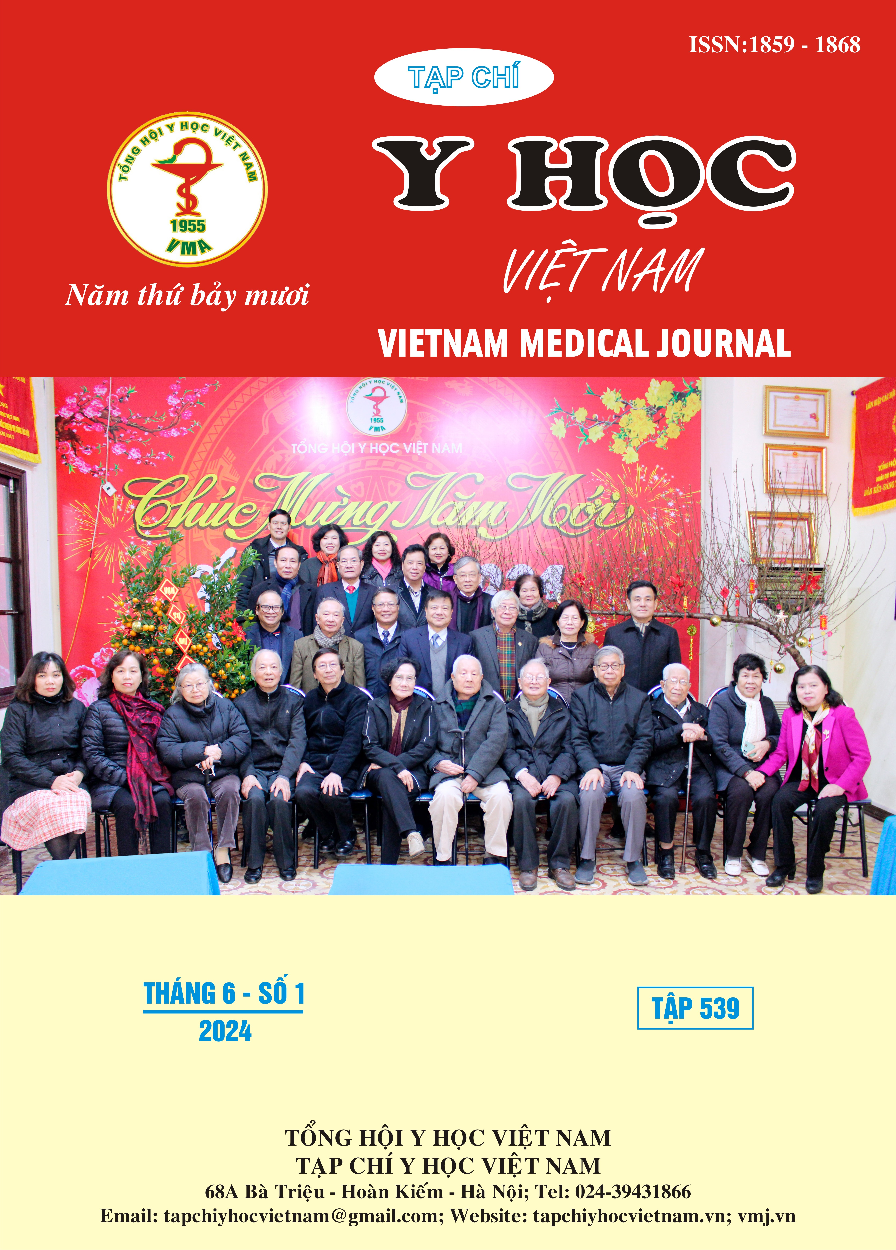STUDY ON ANTI-COLONGATE EFFECTS OF THARODAS NICE IN EXPERIMENTAL ANIMALS
Main Article Content
Abstract
Research objective: To study on the anticoagulant effect of Tharodas granules on a mice model induced by lipopolysaccharide. Subjects and methods: Swiss white mice, both breeds, healthy, weighing 30g - 35g that were provided by the National Institute of Hygiene and Epidemiology. Research method: Research on the anticoagulant effect of Tharodas granules on the lipopolysaccharide coagulation model by Wang B et al. Result: Tharodas granules at a dose of 1.44 g/kg/day tend to be anticoagulant in the lipopolysaccharide coagulation model through preventing platelet aggregation. Tharodas granules at a dose of 4.32 g/kg/day (triple dose) has an anticoagulant effect on the lipopolysaccharide coagulation model through preventing platelet aggregation, equivalent to Rivaroxaban at a dose of 10 mg/kg/day. Tharodas granules at a dose of 4.32 g/kg/day tend to prevent the process of prothrombin from converting into thrombin and the process of consuming exogenously active coagulation factors better (not statistically significant) compared to Rivaroxaban dose 10 mg/kg/day. However, these trends were not better than those at the 1.44 g/kg/day dose. Conclusion: Tharodas granules at a dose of 4.32 g/kg/day (3 times the expected dose for clinical effect) has an anticoagulant effect on the lipopolysaccharide coagulation model through preventing platelet aggregation, equivalent to Rivaroxaban. dose 10 mg/kg/day.
Article Details
Keywords
anticoagulant, Tharodas granules
References
2. Lương Văn Nghĩa (Bản dịch, 2004), Y lâm cải thác, Nhà xuất bản tổng hợp, Hồ Chí Minh.
3. Đỗ Trung Đàm (2006), Phương pháp ngoại suy liều có hiệu quả tương đương giữa người và động vật thí nghiệm. Phương pháp nghiên cứu tác dụng dược lý của thuốc từ dược thảo. Nhà xuất bản khoa học và kỹ thuật. Tạp chí dược học, số 479, tr. 38-41
4. Đỗ Trung Đàm (2014), Phương pháp xác định độc tính của thuốc, Nhà xuất bản y học.
5. Bộ Y tế (2017), Dược điển Vệt Nam V, Nhà xuất bản Y học Hà Nội.
6. Trương Hữu Nhàn và cs (2012). Nghiên cứu độc tính, tác dụng phục hồi trí nhớ của viên nang bổ dương hoàn ngũ thang trên thực nghiệm. Tạp chí nghiên cứu y học TP.HCM, tập 16, trang 124-129.
7. Nguyễn Thế Khánh, Phạm Tử Dương (2001), Xét nghiệm sử dụng trong lâm sàng, Nhà xuất bản Y học Hà Nội, tr. 36 – 41, 118 – 139
8. World Health Organization (2013), Working group on the safety and efficacy of herbal medicine, Report of regional office for the western pacific of the World Health Organization.
9. Gerhard Vogel H. (2016), Drug discovery and evaluation Pharmacological assays, Springer.
10. WANG Biao, WU Shu-ming, et al (2012). Pre-treatment with bone marrow-derived mesenchymal stem cells inhibits systemic intravascular coagulation and attenuates organ dysfunction in lipopolysaccharide-induced disseminated intravascular coagulation rat model. Chinese Medical Journal;125(10):1753-1759.


